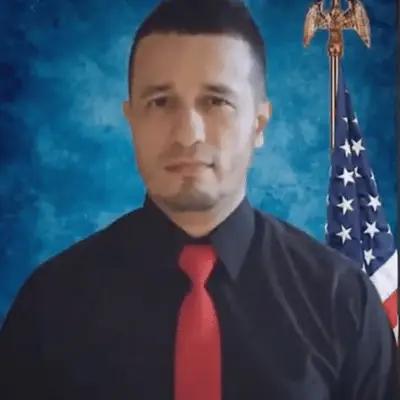10 Educational Learning Theories That Shape Our Classrooms
April 28, 2025 2025-04-28 8:55
10 Educational Learning Theories That Shape Our Classrooms
Imagine a situation where an individual is standing in front of a classroom filled with curious students waiting to learn something new but unable to comprehend where to begin! Although you know your subject inside out, but the real question is – how to make learning appealing and reachable? A simple question – but it unlocks a world of insight and opportunity.
Understanding how individuals learn is essential to design effective educational experiences. Hence, over the years, various educational learning theories have emerged, offering insights into the processes of learning and teaching, thus helping to strategize the learning process.
What is a Learning Theory?
These learning theories are conceptual frameworks that explain how we acquire, retain, remember, and apply new knowledge and skills. They consist of premises and conclusions and are sometimes based on models or taxonomies.
In other words, we can understand that learning theories describe all the processes that occur during learning and also provide an understanding of the factors that influence us during this experience. As a result, they serve as extremely useful tools for all teachers, instructors, and trainers.
What are the Ten Educational Learning Theories?
Let’s journey through the major learning theories—not as concepts, but as characters in the ongoing story of education.
1. The Commander – Behaviorist Learning Theory
It began as early as 1900s, when education was all about obedience, discipline, and drill. Rooted in the works of B.F. Skinner and John B. Watson, the behaviorist learning theory posits that learning is a result of conditioning. They believed that students were blank slates, shaped by reinforcement and punishment. Want someone to memorize math facts? Reward them when they get it right. Over time, behavior changes. Simple, predictable, and controlled.
2. The Scientist – Cognitive Learning Theory
As time moved on, educators began to ask, isn’t there more going on inside the learner’s mind? This encouraged the cognitive learning theory developed by Jean Piaget and Jerome Bruner. They viewed learning as an internal, mental process. In fact, learners build mental maps, solve problems, and form connections through reasoning and logic.
3. The Architect – Constructivist Learning Theory
Then came the Constructivist, rolling out blueprints and encouraging learners to build their own understanding. Inspired by Piaget and Vygotsky, constructivist learning theory holds that knowledge is actively constructed by the learner, often with the help of others. So, it’s about creating meaning rather than learning blindly.

Resilient and adaptable employees report higher innovation
Source: McKinsey
4. The Healer – Humanistic Learning Theory
Humanistic Learning Theory brought compassion to the structure. This theory, grounded in the work of Maslow and Carl Rogers, says learning thrives in a safe, supportive, emotionally open environment. It’s about self-actualization and meeting basic psychological needs before any deep learning can occur. According to a 2024 McKinsey report, emotional intelligence, resilience, and empathy are among the top five skills global employers seek in future-ready workers. Hence, it can be said that humanistic learning is not just ideal but impactful.
5. The Mirror – Social Learning Theory
Albert Bandura’s Social Learning Theory introduced a powerful idea: people learn by observing others. Whether it’s watching a teacher solve a problem or a classmate navigate a conflict, learning is contagious. Hence, in peer modelling, group work, media-based learning – individuals can watch and reflect. McKinsey’s 2024 Workplace Capability Report showcased, employees engaged in peer-learning programs were 33% more likely to retain new skills and 42% more likely to apply them on the job compared to those in isolated learning.
6. The Explorer – Experiential Learning Theory
Developed by educational theorist David Kolb, it proposes that learning is a cyclical process. Unlike passive absorption of facts, experiential learning happens through experience, reflection, conceptualization, and experimentation. According to a 2023 McKinsey survey, 75% of employees report that on-the-job training and practical simulations are the most effective forms of professional development. Yet, fewer than 30% of organizations actively embed experiential learning in their learning strategies.
Gartner also highlights that companies with experiential training programs see a 30% increase in employee performance and retention compared to those relying on theoretical instruction alone.
The same holds true in schools and universities. As per Forbes Education, students retain 75% of what they do, compared to just 10% of what they read.

The mindset that matters the most
Source: McKinsey
7. The Artist – Multiple Intelligences Theory
In 1983, psychologist Howard Gardner published Frames of Mind, turning the traditional concept of intelligence on its head. At the time, intelligence was often measured by a single number: IQ. But Gardner asked, “What if intelligence is not a single line, but a spectrum?”
Thus, the Multiple Intelligences Theory was born—shaking the foundations of how we define ability, achievement, and education itself. According to a 2023 McKinsey report, 58% of teachers surveyed said their students are “increasingly disengaged” by one-size-fits-all teaching methods. Meanwhile, a Forbes Education article noted that student engagement increases by up to 40% when lessons incorporate multiple learning modalities—a key principle of Multiple Intelligences Theory.
8. The Networker – Connectivism
Connectivism is a learning theory built for the digital age by George Siemens and Stephen Downes in the early 2000s. It challenges traditional learning theories such as; behaviorist, cognitive, and even constructivist learning theory by arguing that knowledge is everywhere in our networks, devices, and communities. In a recent Gartner Learning & Development report (2024), over 70% of organizations emphasized that future skills must be learned in real-time, through collaboration, content curation, and community—not from static curricula.
Forbes predicts that by 2030, 80% of global upskilling will occur via online peer networks, communities of practice, and self-directed learning pathways—not traditional classroom settings.
9. The Philosopher – Transformative Learning Theory
Some learning doesn’t just add knowledge—it changes who we are. Transformative Learning is one such theory by Jack Mezirow in the late 1970s. He believed that critical reflection especially in adulthood can shift our worldview. It is deep, sometimes uncomfortable, but always powerful! It is not about memorizing facts or picking up skills. It is about changing how we see ourselves and the world. learners go through a process of reflection, dialogue, and reconstruction of meaning from disorienting dilemma – the moment that challenges our assumptions.

Source: Prezi
10. The Local – Situated Learning Theory
Developed by Jean Lave and Etienne Wenger in the early 1990s, Situated Learning Theory proposes that learning is inherently social and contextual. It happens not in isolation, but in the real environments where that knowledge is actually used. A 2024 McKinsey Education Report showed that organizations using apprenticeship-style models and on-the-job learning outperform those using traditional training by 34% in learner retention and application. This proves that educational learning theories rooted in practice—like Situated Learning—are not just theoretical. They’re transformational.
How to Implement Learning Theories in the Classroom
Learning isn’t a formula. It’s a story—your story, your students’ story, and the story of the countless educators who came before. Whether you teach with the structure of a behaviorist or the freedom of a constructivist, every theory gives you a new lens to understand the wonder of how we learn.
Teachers can develop specific strategies and new techniques to implement all the principles in their classes so that all students can learn better. So that all students can learn better in a better way. For this, all teachers should first focus on getting holistic and higher education so that they can properly understand the various techniques of teaching and classroom management. It is very important for all teachers to understand what the correct principles of learning are, which can play an important role in teaching others, so that they can use them effectively in their classes.
Transform Learning Into Purpose — Start Your Journey with AIU
FAQs-
Q. How does the learning of theories influence teaching methods?
Think of learning theories as the compass guiding a teacher’s journey. Each theory offers different strategies—from direct instruction (behaviorism) to project-based learning (constructivism). Great teachers blend approaches to meet their students where they are.
Q. What is the difference between behaviorism, cognitivism, and constructivism?
- Behaviorism: Focuses on actions and rewards. (What the learner does)
- Cognitivism: Focuses on thought processes. (What the learner thinks)
- Constructivism: Focuses on building meaning from experience. (What the learner constructs)
Each adds a unique perspective on how we learn.
Q. Which learning theory is best for adult education?
Transformative Learning Theory often resonates with adults, especially when learning challenges their beliefs or worldview. However, experiential and constructivist methods also work well, since adults bring rich life experience to the table.
Q. How are learning theories applied in the classroom?
Teachers use learning theories like tools:
- Behaviorist: Drills, rewards, repetition
- Cognitive: Strategy instruction, problem-solving
- Constructivist: Inquiry, collaboration
- Humanistic: Emotional support, learner autonomy
The best classrooms are a symphony of these theories, playing in harmony.
Author Bio

Kathakali Basu is a dynamic Content Strategist and Brand Communication expert at Atlantic International University, with a knack for transforming ideas into compelling narratives. With a Masters in Sociology and certification in Content Marketing, Kathakali expertly crafts strategies that elevate brands and captivate audiences. Her extensive experience in content writing and strategy has helped numerous businesses articulate their vision and connect meaningfully with their target market. Passionate about blending creativity with data-driven insights, Kathakali thrives on creating impactful content for the last 16+ years that not only resonates but drives results.
An animal lover and believer in inclusivity, she actively participates in animal rescues and rehoming. When she’s not strategizing, you’ll find her exploring the latest trends in digital marketing or indulging in reading and her love for storytelling.
Related Posts
10 Educational Learning Theories That Shape Our Classrooms
April 28, 2025 2025-04-28 8:55Popular Tags






























